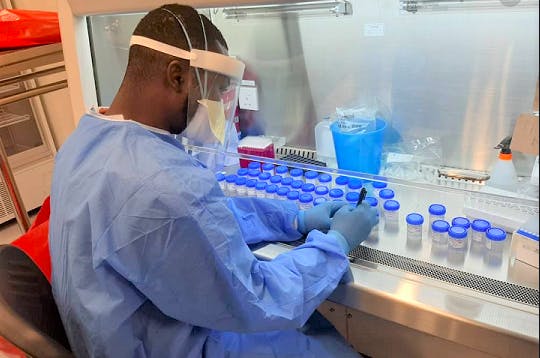Western offering on and off-campus students COVID-19 tests free of cost to students

Through the last 10 months of the pandemic, there have been multiple ways to detect the COVID-19 virus — batch testing being one of them. Western offers these COVID-19 tests to students on and off campus, so how does it compare to individual testing?
If a student has been exposed to someone with COVID-19 or has symptoms, testing is the first step in order to find out if they’re positive. Students can go to the Student Health Center page and schedule an individual test or a batch test appointment, depending on what known exposure they have had to the virus.
David Hansen, the associate medical director for the Student Health Center, broke down the logistics of how on-campus COVID-19 tests work.
“There is no cost to students for batch/surveillance tests performed at Fraser Hall,” Hansen said in an email interview. “The test costs $130 and is paid for by the university. The batch method of testing allows the University to collect samples from 10 individuals in a single conical resulting in a cost of $13 per person (paid by the university).”
Second-year Western student Hanna Cejah was tested for COVID-19 with a batch test at Western.
“I went and got tested early in the morning,” Cejah said. “I got a call saying that I needed to come back to get tested because someone in my group came back positive. I went the next day, and this test was in a different building [from Fraser Hall] that was the Student Health Center.”
Although a positive batch test meant individual testing was required, Cejah said the process was smooth overall.
“I really liked how quick they were,” Cejah said. “When I went, there wasn't a line. I went straight in the second time that I had to go get tested individually. It was fine. If I could change anything, I would change the batch testing, if that's even possible, just because it feels like a waste.”
Though individual and batch testing screen for the same disease, there are different processes to extract the virus. Molecular biologist Casey Schlenker at the Exact Scientific Services lab said the facilities producing tests need key chemicals for tests to be accurate.
“[There is] a chemical that splits the virus you test that uses PCR [polymerase chain reaction],” Schlenker said. “It has been very difficult to get these chemicals necessary for these types of extractions.”
For the test to show up positive, a certain amount of virus particulars needs to be present in order for that batch to be flagged.
“Any person who's infected, it's not going to be one filled copy of the virus, and it's going to be billions or trillions,” Schlenker said. “So even if there is a slight sign of virus particles, it is going to show up.”
Supply and demand have also impacted testing and the companies producing the necessary materials, Schlenker said
“The few companies that make these things are overstressed and trying to reduce the need for raw materials system-wide because they are valuable to everybody,” Schlenker said.
As the pandemic persists, so will on-campus COVID-testing.
“Our current plan is to continue COVID-19 surveillance tests through the end of spring quarter,” Hansen said. “At that time, the program will be re-evaluated based on case counts in the county and state and the status of vaccinations.”





